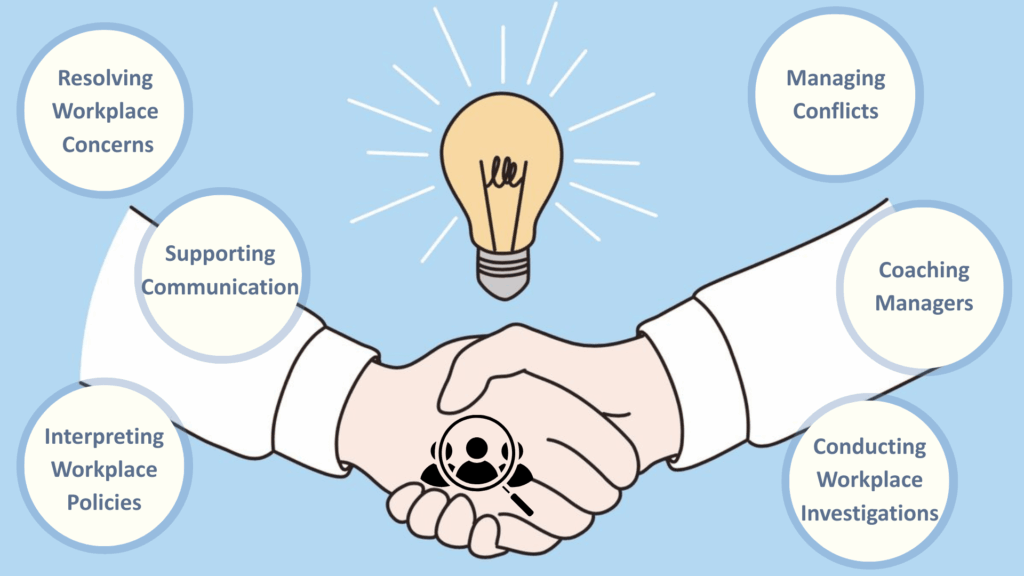Have you been punished at work for speaking up about something wrong?
You might have a workplace retaliation case.
Unfortunately, retaliation in the workplace is all too common, and employees who stand up for what’s right often find themselves facing consequences.
Understanding what makes a strong retaliation case can help you protect your rights and get the compensation you deserve.
Knowing your rights is essential when dealing with these challenging situations.
This article will outline the essential elements of retaliation claims, covering the legal fundamentals and how these cases are usually resolved.
What Is Retaliation in the Workplace?
Workplace retaliation happens when an employer punishes an employee for engaging in legally protected actions.
These actions may include reporting discrimination, harassment, or safety issues.
Retaliation can take many forms such as termination, demotion, denied promotions, pay cuts, or negative reviews.
It often occurs after the employee raises concerns or participates in an investigation.
Legal Definition of Retaliation
Title VII also makes it unlawful for an employer to take a negative action, or retaliate, against a person because they:
- Complained about discrimination, whether formally or informally.
- Filed a charge of discrimination with an agency like the U.S. Equal Employment Opportunity Commission.
- Participated as a witness in an employment discrimination investigation or lawsuit.
Workplace retaliation happens when your employer punishes you for doing something the law protects.
Examples of Retaliation in the Workplace
Workplace retaliation takes many forms. Common examples include:
- Termination or demotion after filing a complaint
- Undesirable job assignments or schedule changes
- Harassment or hostile treatment from supervisors
- Denial of promotions or training opportunities.
Retaliation can occur in different forms, each affecting an employee’s job and work environment.
Identifying these signs is crucial for protecting your rights and taking the necessary steps to address them.
The Key Federal Laws that Protect Against Retaliation Are
- Title VII of the Civil Rights Act of 1964 – Protects against retaliation for reporting discrimination based on race, color, religion, sex, or national origin
- Americans with Disabilities Act (ADA) – Protects those who report disability discrimination
- Equal Pay Act – Shields employees who report wage discrimination
- Age Discrimination in Employment Act – Covers age discrimination complaints
These federal laws are here to protect you if you face retaliation after speaking up about discrimination.
Knowing your rights can help keep your workplace fair and safe.
Key Elements of a Strong Retaliation Case
How to build a strong retaliation case comes down to proving four main elements. Each piece must be solid for your case to succeed.
1. Protected Activity
The first step is showing you engaged in a protected activity something the law allows you to do without fear of punishment.
Protected activities include:
- Reporting discrimination or harassment to HR or management
- Filing complaints with the EEOC or other agencies
- Testifying in discrimination investigations
- Opposing illegal practices (e.g., safety violations)
- Requesting accommodations for disabilities or taking protected leave
Your complaint does not need to be proven right, just that you reasonably believed something was wrong.
2. Adverse Action by Employer
Next, you must show that your employer took an adverse action against you. This means something that seriously impacted your job or work environment.
Examples of adverse actions include:
- Termination or forced resignation
- Demotion or job reassignment
- Pay cuts or denial of promotions
- Negative performance reviews (when unwarranted)
The evidence must show that the actions were more than trivial harms or petty slights and would discourage a reasonable person from making future complaints.
3. Causal Connection
Proving a connection between your protected activity and the adverse action is often the hardest part.
You need to show the employer’s actions were a direct result of your protected activity.
Strong evidence includes:
- Close timing between your complaint and adverse action
- Direct statements from supervisors about your complaint
- Pattern of treatment changes after your complaint
Timing can be a key factor, such as being fired soon after filing a complaint.
4. Proof of Employer’s Motive
You must show why your employer took action, usually through circumstantial evidence, as employers rarely admit to retaliation.
Types of evidence include:
- Written communications about your complaint
- Changes in supervisor behavior after your complaint
- Inconsistent reasons given for adverse actions
Case Studies: How Retaliation Claims Play Out

Real workplace retaliation cases show how these legal principles work in practice.
Below mentioned are examples from actual court cases and EEOC findings-
1. Case Study: Wells Fargo Branch Manager
Wells Fargo N.A. abruptly fired a Los Angeles Wells Fargo branch manager after he reported several incidents of possible bank, mail, and wire fraud by two bankers he supervised.
The manager, who never received a poor job evaluation, was unable to find work in banking after Wells Fargo fired him in 2010.
This case shows strong retaliation elements:
- Protected Activity: Reporting fraud (whistleblowing)
- Adverse Action: Termination of a previously successful employee
- Causal Connection: Firing came after fraud reports
- Proof of Motive: No performance issues before the complaint
At the conclusion of the investigation, OSHA determined that the manager’s whistleblower activity, protected under the Sarbanes-Oxley Act, was a contributing factor in the decision to fire him.
Accordingly, in April 2017, OSHA ordered-
(i) the manager’s job reinstated
(ii) his personnel file cleared, and
(iii) full compensation for back pay, compensatory damages, and attorneys’ fees.
The amount owed to the former manager was approximately $5.4 million.
2. Case Study: Healthcare Discrimination
Ms. Chantal Charles, who is African-American and Haitian, filed a complaint with the Massachusetts Commission Against Discrimination in 2011 based on the behaviUor of her supervisor.
As a result, Charles began receiving negative job evaluations.
This case demonstrates retaliation through performance manipulation:
- Protected Activity: Filing discrimination complaint
- Adverse Action: Negative reviews after positive history
- Pattern Evidence: Denial of benefits given to others
- Substantial Award: The jury in the case awarded Charles $500,000 for emotional distress, $389,000 in additional pay, and $10 million in punitive damages.
Common Defenses Employers Use Against Retaliation Claims
Employers rarely admit to retaliation. Instead, they offer alternative explanations for their actions. Understanding these common defenses helps you prepare stronger evidence.
Performance-Related Reasons
The most common defense is claiming poor performance. Employers often say:
- “We fired them for missed deadlines.”
- “Their work quality declined.”
- “They violated company policies.”
- “We had to cut positions due to budget.”
Restructuring and Business Needs
Employers also claim business necessity:
- “We eliminated their position.”
- “The company reorganized.”
- “We needed different skills”
- “It was a reduction in force”.
How Retaliation Claims Are Generally Settled?

Most retaliation claims are resolved through settlements instead of going to trial.
The process usually starts with filing a complaint to the EEOC or a state agency.
If they find cause, mediation may be offered to resolve the issue.
Settlements can include lost wages, emotional distress, or even reinstatement.
The timeline depends on how complex the case is.
Strong evidence and legal support can improve your chances.
Settlement vs. Litigation Process
Most retaliation cases settle out of court.
Companies often choose to settle retaliation lawsuits out of court to manage costs.
Litigating a retaliation claim can be financially draining due to attorney fees, court costs, and other associated expenses.
The typical process includes:
- Filing with EEOC – Most cases start with an EEOC complaint
- Investigation – The Agency investigates and may find cause
- Mediation attempts – Parties try to reach an agreement
- Right to sue letter – If no settlement, you can file in court
- Lawsuit and discovery – Evidence gathering phase
- Settlement negotiations – Most cases settle before trial
- Settlement Amount Factors
Retaliation damage calculations consider factors like age, job type, education, career length, earning capacity, and emotional distress.
Settlement Amounts Vary Widely Based on
- Lost Wages and Benefits
- Future Earning Capacity
- Emotional Distress Damages
- Punitive Damage Potential
- Company Size and Resources
- Strength of Evidence
The Average Settlement for a Retaliation Lawsuit in California Ranges from $40,000 to $250,000, with the Exact Amount Influenced by Several Factors.
Compensation Types Available
Compensatory Damages Pay Victims for Out-of-Pocket Expenses Caused by the Discrimination.
Available Damages Include:
| Economic Damages: | Non-Economic Damages | Additional Relief |
|---|---|---|
| Back Pay (Lost Wages) | Emotional Distress | Attorney’s Fees and Costs |
| Front Pay (Future Earnings) | Pain and Suffering | Reinstatement to Position |
| Lost Benefits and Bonuses | Loss of Reputation | Policy Changes at Company |
| Job Search Costs | Mental Anguish |
These compensation types provide a comprehensive approach to addressing both the financial and emotional impacts of retaliation.
Conclusion
Building a strong retaliation case is the first step toward protecting your rights at work.
If you’ve experienced retaliation, make sure you can prove the key elements: you took part in a protected activity, faced an adverse action, and can clearly connect the two.
Your documentation and evidence will play a big role in your case.
Most retaliation claims are settled outside of court, and settlement amounts can vary based on how solid your case is.
The sooner you document everything, the stronger your case will be.
Don’t let fear stop you from standing up against workplace issues like discrimination.
Laws are here to protect you, and taking action quickly will help you secure your rights.
Frequently Asked Questions
Can My Employer Retaliate Against Me for Supporting a Coworker’s Discrimination Complaint?
Yes, supporting or testifying for a colleague’s complaint is protected activity. Employers cannot punish you for helping others assert their rights.
Can I File a Retaliation Claim if I Quit My Job Instead of Being Fired?
Yes, if you quit due to unbearable working conditions created after your protected activity, this is called “constructive dismissal” and counts as retaliation.
How Long Do I Have to File a Retaliation Lawsuit in Court After Getting My Right-To-Sue Letter?
You typically have 90 days from receiving your EEOC right-to-sue letter to file a retaliation lawsuit in federal court. Don’t miss this deadline.
Can My Employer Retaliate Against My Family Members Because of My Complaint?
No, it’s illegal for employers to punish your family members or close friends to retaliate against you. Both you and your family member can file legal claims.










